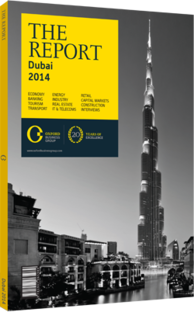OBG talks to Colm McLoughlin, Executive Vice-Chairman, Dubai Duty Free

Interview: Colm McLoughlin
How would you describe the complementary relationship between Dubai’s tourism and retail sectors?
COLM MCLOUGHLIN: Many alliances have evolved between the tourism and retail sectors over the past decade. The large scale of retail infrastructure in Dubai leaves a significant impression on tourists. Furthermore, the wide availability of luxury retail brands has now become a very important aspect of tourism in the region.
Retail will certainly be one of the key factors in achieving Dubai's tourist growth targets through 2020. The industry now accounts for approximately 30% of GDP in Dubai, driven primarily by the emirate's 40 shopping malls. The 1.1m-sq-metre Dubai Mall had a footfall of 65m people in 2012, which eclipses total visitors to New York and Los Angeles. Encouragingly, even the smaller, older shopping centres still maintain a relatively high degree of activity and brand presence.
Which factors are expected to play the largest role in further increasing duty-free sales?
MCLOUGHLIN: As always, infrastructure development is going to be the fundamental key ahead. The more passengers that come to Dubai, be it for business or pleasure, the greater the number that will pass through Dubai Duty Free.
The opening of Concourse A at Dubai International Airport (DIA) in January 2013 created an additional 8000 sq metres of new retail space. Looking forward, with a new Concourse D currently in the early stages of development, there will continue to be new retail opportunities. Even if DIA reaches capacity, Al Maktoum International will have space for 64,000 sq metres of retail space in the long term. International averages for airport duty free show that 18-19% of outgoing passengers are sold to, whereas Dubai Duty Free is able to sell to 49% of departing passengers.
With the growth in traveller facilities, retailers can focus more on increasing sales per customer rather than being preoccupied with generating greater traffic. That said, the duty-free industry's spending on marketing and promotion as a percentage of sales leaves considerable scope for improvement.
What is your response to the argument that Dubai’s retail segment has reached a point of saturation?
MCLOUGHLIN: From our perspective, Dubai's retail sector still remains far from saturation, both in terms of duty-free options and the broader domestic market. For instance, if 2012’s 10m tourists become 20m as targeted by 2020, retail has to grow hand-in-hand to accommodate the influx. This will spur new retail projects while also encouraging pre-existing retail facilities to adjust to visitor trends with respect to brands sold and space allotted to different products.
What issues must be addressed as regional competitors continue to enhance their retail offerings?
MCLOUGHLIN: It is quite important that Dubai's retail sector keeps a watchful eye on value as regional competition increases. There needs to be careful, overall regulation to ensure fair pricing as well as consumer protection. As well, there should be greater investment in the training of retail employees to ensure that their product knowledge and level of customer service is exceptional. I think that, generally speaking, the level of customer service in the retail sector in the UAE is very good. I believe that in terms of duty free, our staff is among the best-trained in the world, as we do invest a great deal in this area.
In addition to this, the duty-free industry must do its part by providing products that may otherwise be difficult to find in the home markets of many consumers, as well as by offering products at a better price to high-street shopping destinations. In terms of our retail offering, we need to ensure that we have the latest products, and that wherever possible we have regional exclusives whereby our customers are given the first chance to purchase at Dubai Duty Free. Continuing to offer a “sense of place” is important, as international travellers like to differentiate between airports.
You have reached the limit of premium articles you can view for free.
Choose from the options below to purchase print or digital editions of our Reports. You can also purchase a website subscription giving you unlimited access to all of our Reports online for 12 months.
If you have already purchased this Report or have a website subscription, please login to continue.

